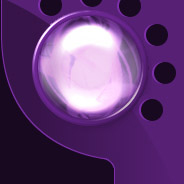Lent
is a time of penance and preparation for holy week which starts on
Palm Sunday (Hadd il-Palm), and ends with Easter Sunday(Hadd il-Ghid),
- the celebration of the risen Lord. Preparations for these solemn
festivities usually commence forty (40) days before Easter Sunday
on Ash Wednesday which in itself is the first day of penitential period
following the end of the Carnival celebrations. Although many still
observe fasting and abstinance. Rules in this respect have now been
relaxed considerably, and obligatory fasting is now limited to Ash
Wednesday and Good Friday (Il-Gimgha l-Kbira). There are also people
that do not eat meat every Wednesday and Friday and sweets through
these 40 days.
Lenten
sermons (ezercizzji - or spiritual exercises), meant to bring about
reconciliation between man and his Creator, are held in all parishes
in Malta and Gozo over a number of days, generally in the evenings.
The traditional Way of the Cross is another very popular devotion
during this period, with the faithful meditating at the fourteen Stations
of the Cross (Via Sagra) relating various episodes of the Passion
and Crucifixion of Our Lord.
A number
of penitential pilgrimages are also held, and statues depicting scenes
from the Passion are venerated in several churches. And some churches
also dress in black damask.
Our
Lady of Sorrows Day
The feast of Our Lady of Sorrows (Id-Duluri) has a very special place
in the hearts of thousands of Devotees. This feast is traditionally
celebrated on the Friday before Good Friday, with the faithful walking
in the procession behind penitential pilgrimages in practically every
town and village. Traditionally, some of the penitents walk barefoot
or drag heavy chains tied to their feet, in fulfilment of some vow
for favours received through divine intercession.
From
Palm Sunday to Maundy Thursday
Holy Week (Il-Gimgha Mqaddsa) celebrations start on Palm Sunday (Hadd
il-Palm), commemorating Christ's triumphal entry into Jerusalem. However,
celebrations really take off on Maundy Thursday (Hamis ix-Xirka),
with the commemoration of the Last Supper (L-Ahhar Cena). Traditionally,
the faithful pay visits to seven Altars of Respose (Sappulkru), preferably
in different churches. Several artistic examples of these Altars,
beautifully decorated for the occasion, are to be found in a number
of parishes in Malta and Gozo. But the most popular are the Altars
of Repose that set in the churches of The Three Cities, Vittoriosa,
Cospicua and Senglea. On Maundy Thursday, in some localities also
stop the working of the bell, and took the work of the bell the Cuqqlajta,
this is very popular in Zejtun.
Representations
of the Last Supper table are put up in many towns and villages, and
typically, the food used in these displays is distributed among the
poor and needy of the parish.
Good
Friday (Il-Gimgha l-Kbira) is a day of penance, and this is strictly
observed through the veneration of the Cross (is-Salib) and through
traditional Good Friday processions in different parishes. Statues
representing various scenes from the Passion and Death of Christ,
several of them veritable works of art by local artisans, are carried
processionally. Figures dressed in Biblical, Roman and Jewish attire
also take part, as do the local bands playing funeral marches.
The
Good Friday ritual in Malta includes visits to seven tabernacles,
or "Altars of Repose", in seven different churches. Sombre,
and solemn religious processions and pageants are held in many towns
and villages, with statues and costumed, local amateur actors representing
scenes from the Passion of Christ. In some parts of Malta, these processions
will include a number of penitents dressed in white robes and hoods,
walking barefoot (or occasionally with chains tied to their ankles)
as an act of penance or in fulfilment of a vow. This is a unique,
medieval tradition which still survives today. Easter Sunday in Malta,
by contrast, is marked by the incessant pealing of church bells, and
festive, fast-paced processions, with the youth of each town running
through the streets bearing sculptures of the Risen Christ.
Easter
Sunday
The scene changes on Easter morning, and the triumphal Resurrection
is traditionally celebrated with the statue of the Risen Christ (L-Irxoxt)
generally being carried "on the trot" through the main streets
to the applause of the crowds. Children too enjoy, thanks to gifts
of Easter Eggs (Bajd ta' l-Ghid) and traditional 'figolla', usually
a pastry figure of a lamb or fish which carry with them and hold out
to be blessed by the Risen Christ.
Traditional
food eaten throughout Holy Week
Traditional Maltese food for the Lenten period includes qaghaq tal-Appostli
(Apostles' Rings), which are circular loaves of unleavened bread studded
with roasted almonds and sprinkled with sesame seeds, and honey cakes
known as kwarezimal (the name refers to the quadragesima, or 40 days
of Lent). On Easter Sunday children are rewarded for their abstinence
from sweets throughout Lent by means of a figolla, or Easter cookie
made with almond paste, covered in sweet, coloured icing, and formed
in a festive shape, such as a rabbit, a baby chick, a duck or a traditional
Maltese fishing boat (dghajsa).
Traditional
food of Lent period and Good Friday
Kwarezimal (Lent Cake)
Karamelli (Julep sweets)
Pastizzi ta' l-Incova (Anchovy Cakes)
Torta tal-Haxu (Riccota Pie)
Qaqgha ta' l-Appostli (Appostles Ring Bread)
Qaqocc (Artichoke)
Bebbux (Snails)
Traditional
Food of Easter Sunday
Figolla
Bajd ta' l-Ghid (Easter Eggs)
Haruf (Lamb)
Retrieved from "http://en.wikipedia.org/wiki/Holy_Week_in_Malta"
Click
here




